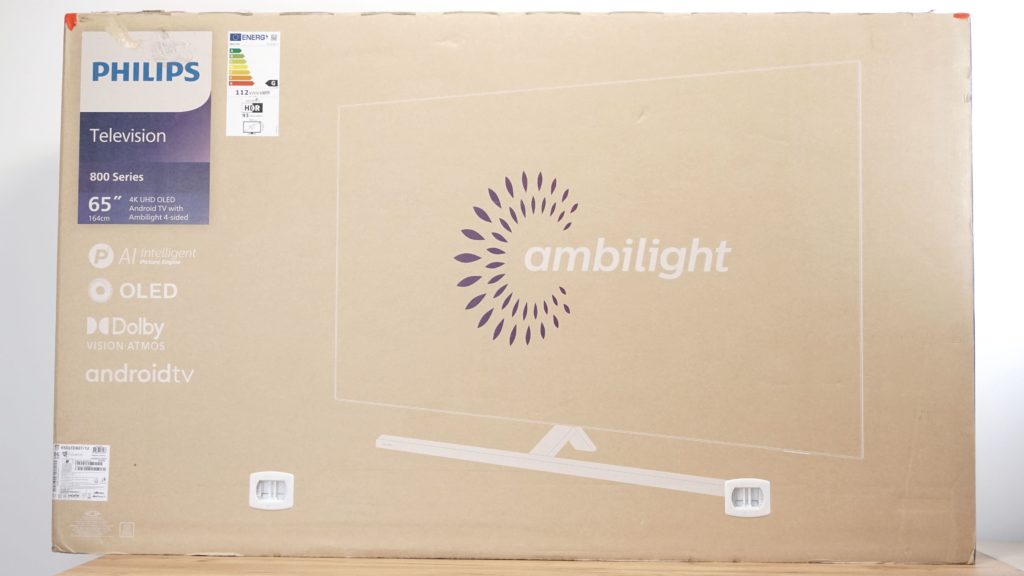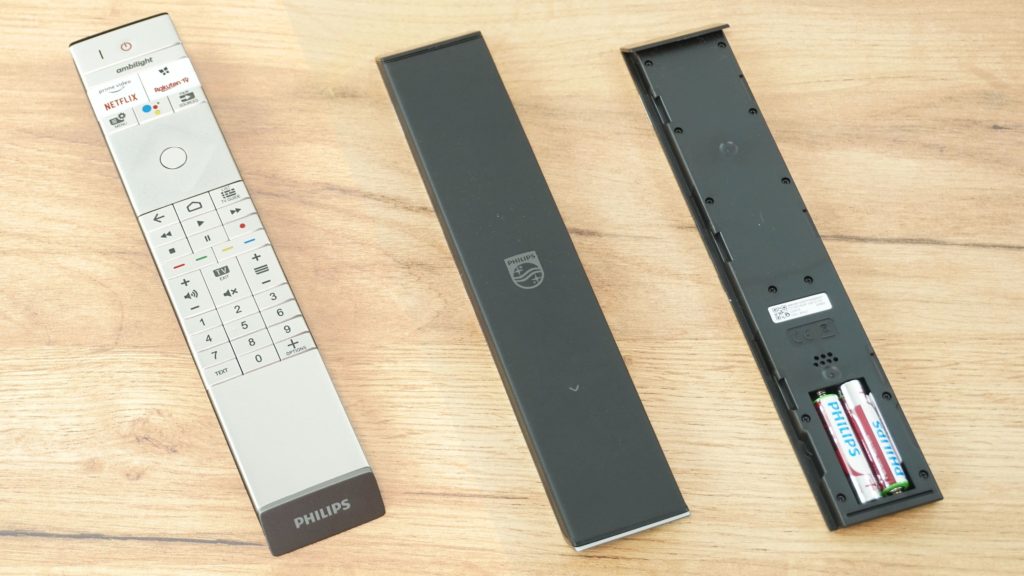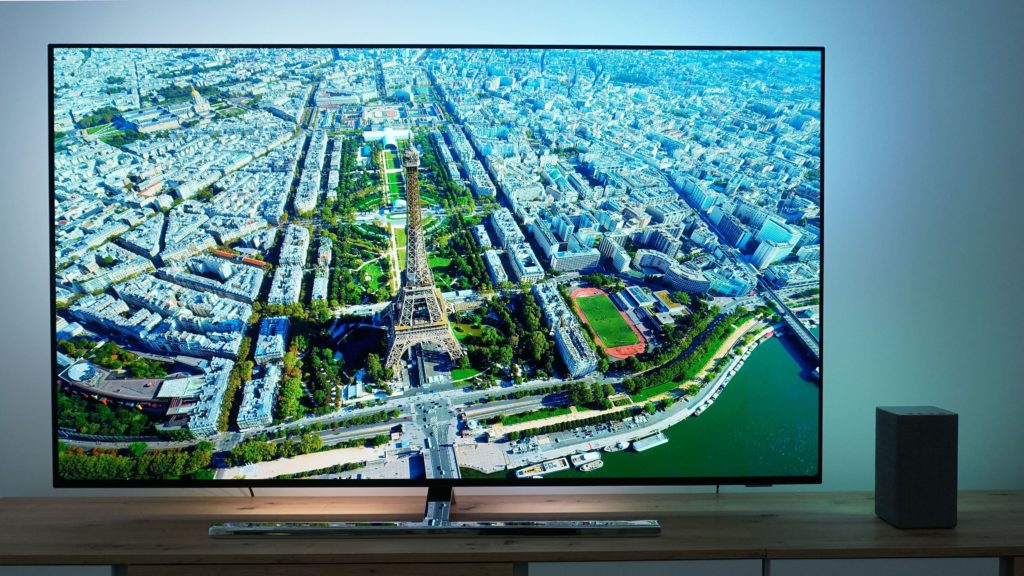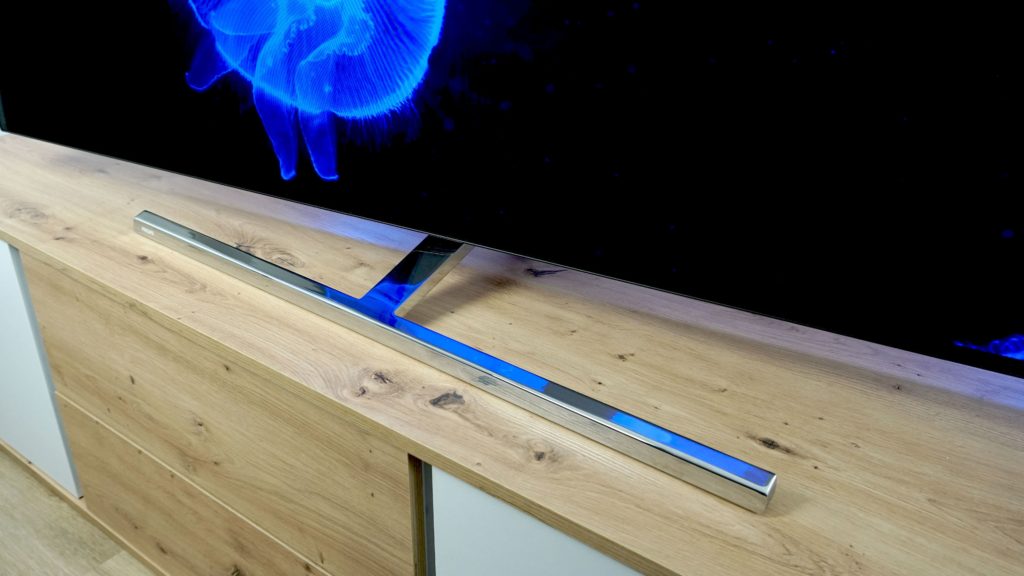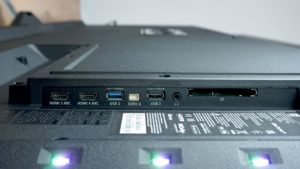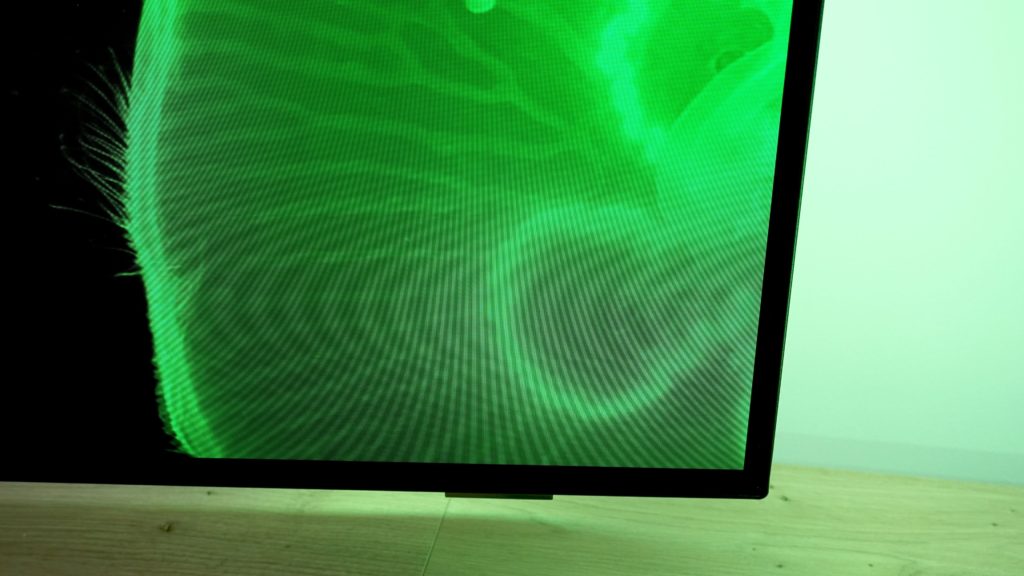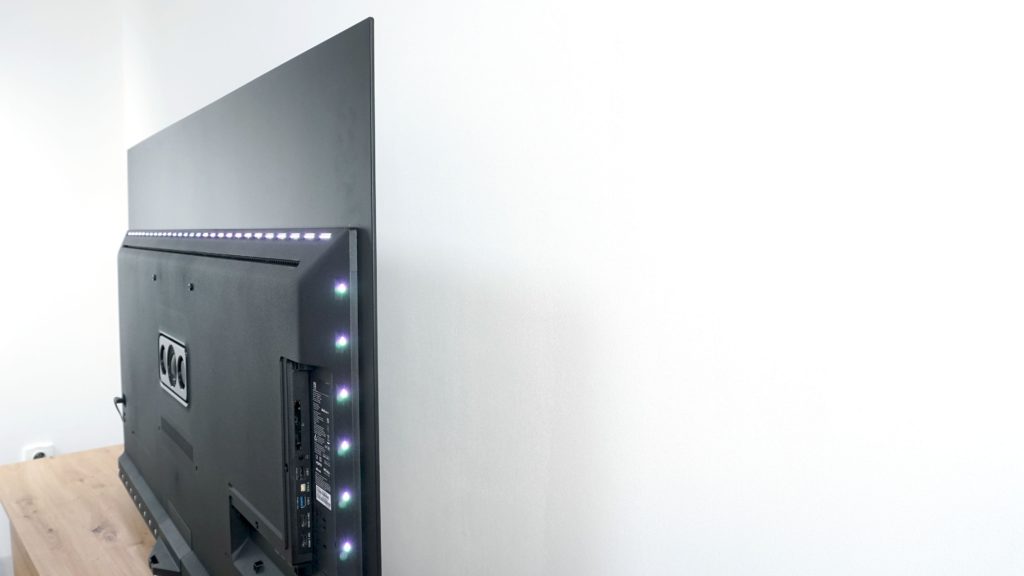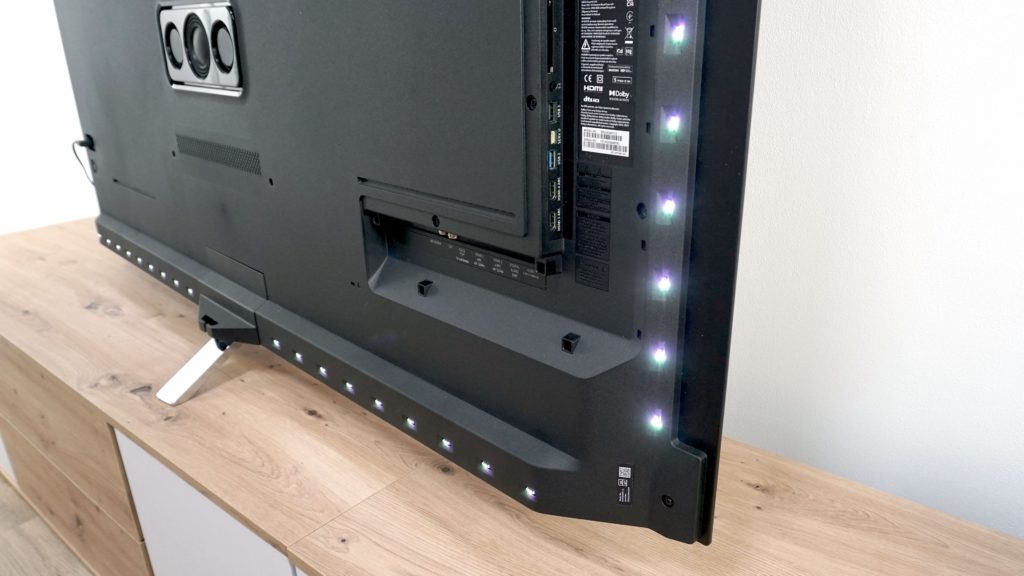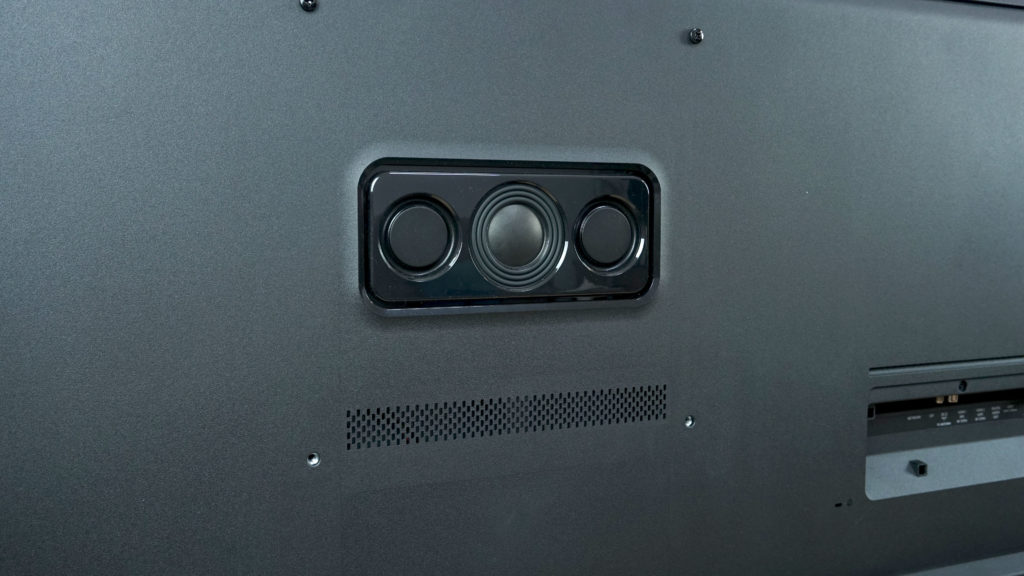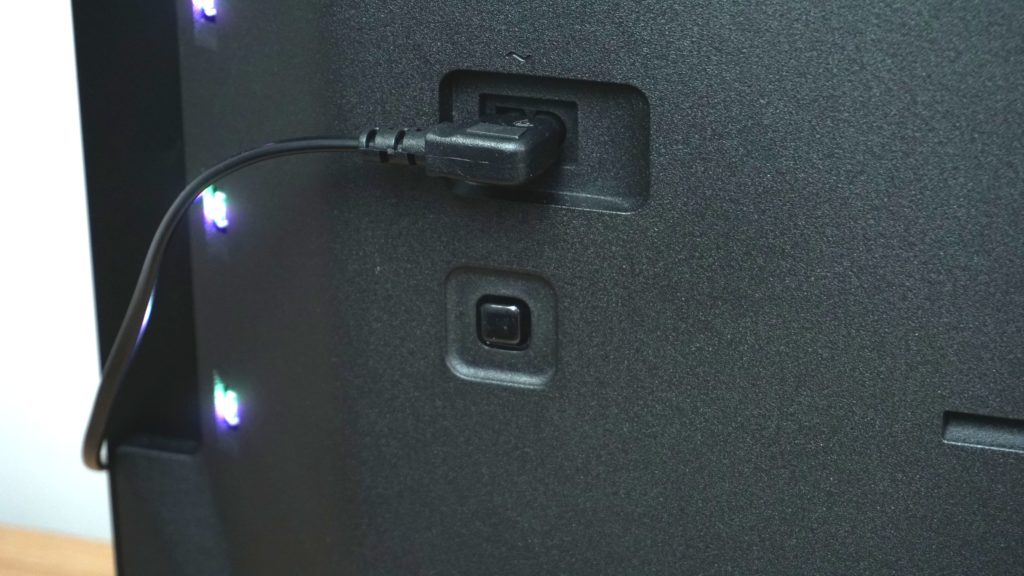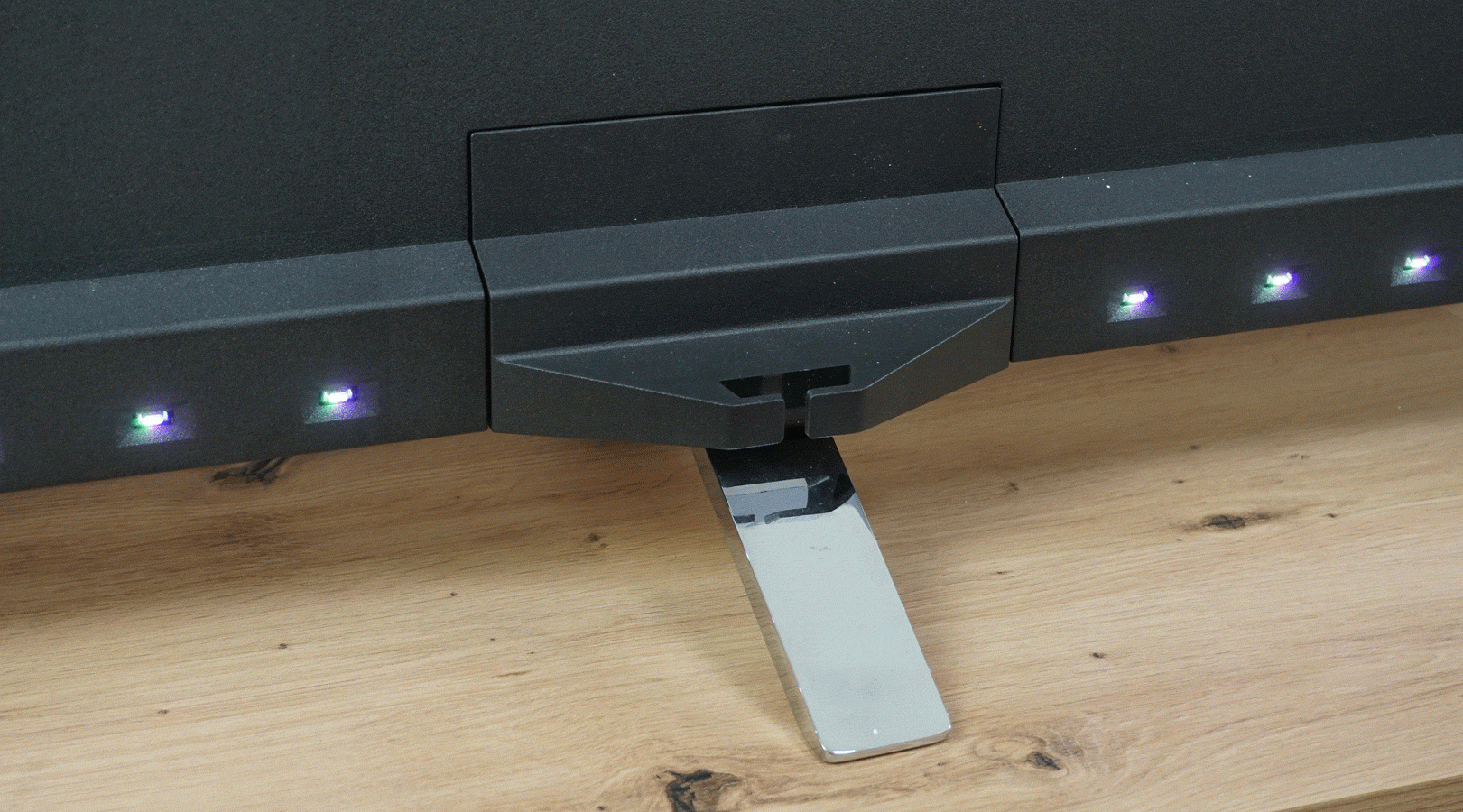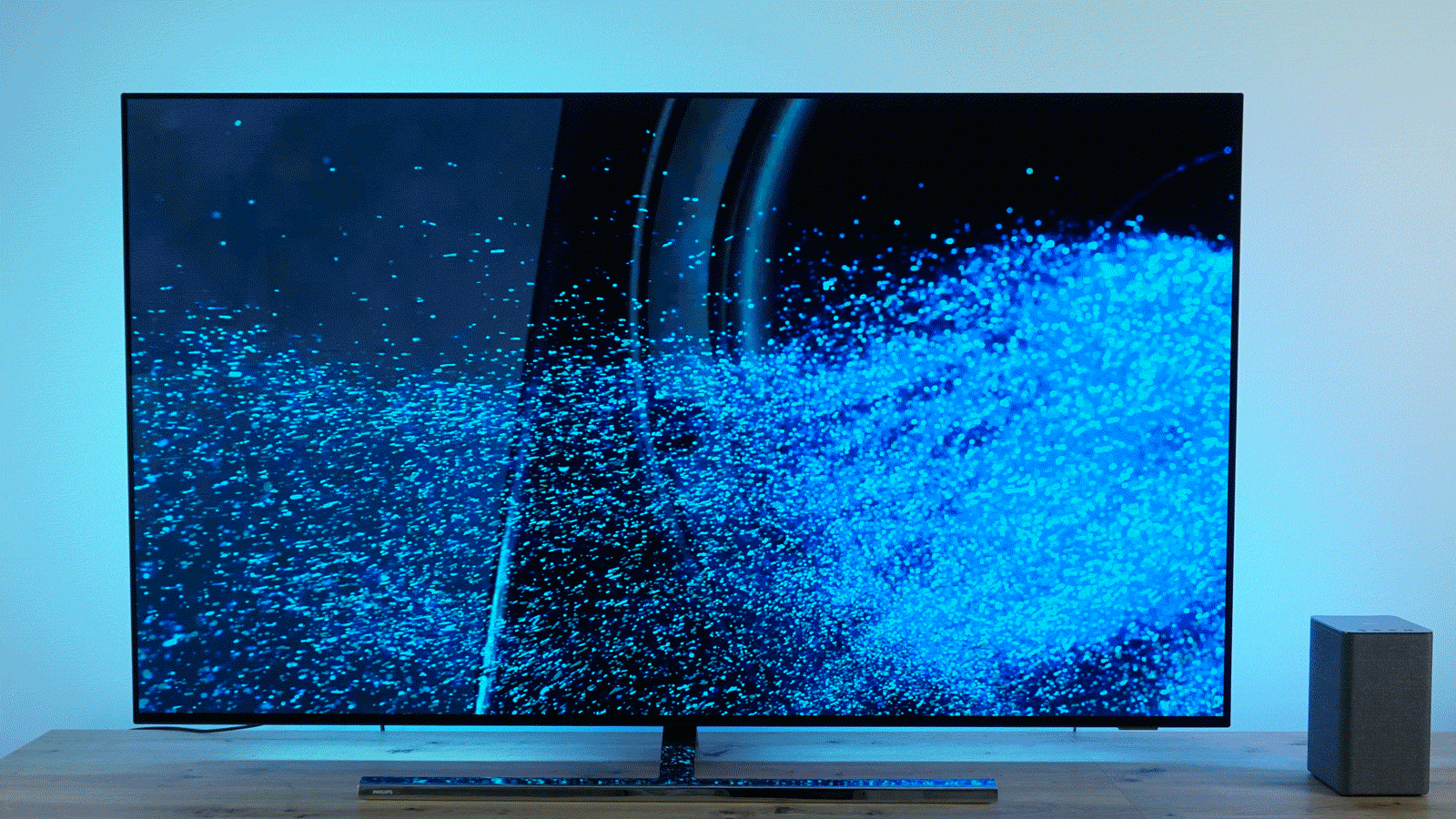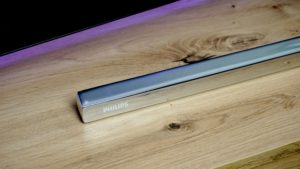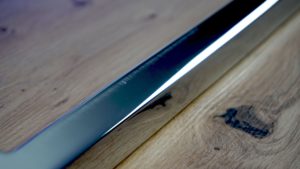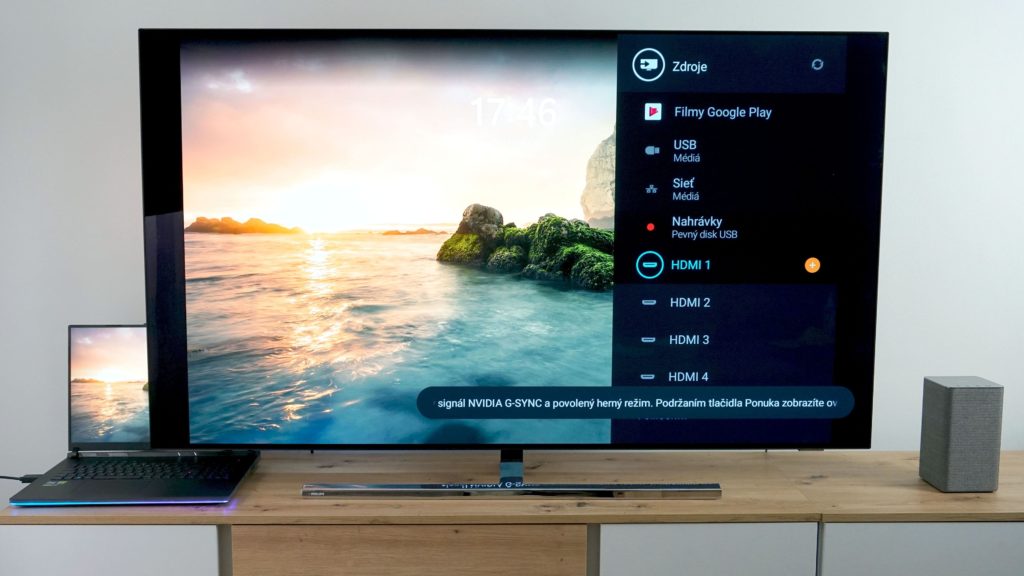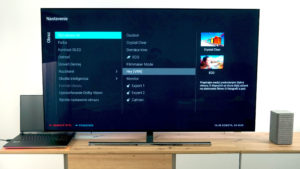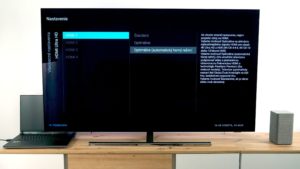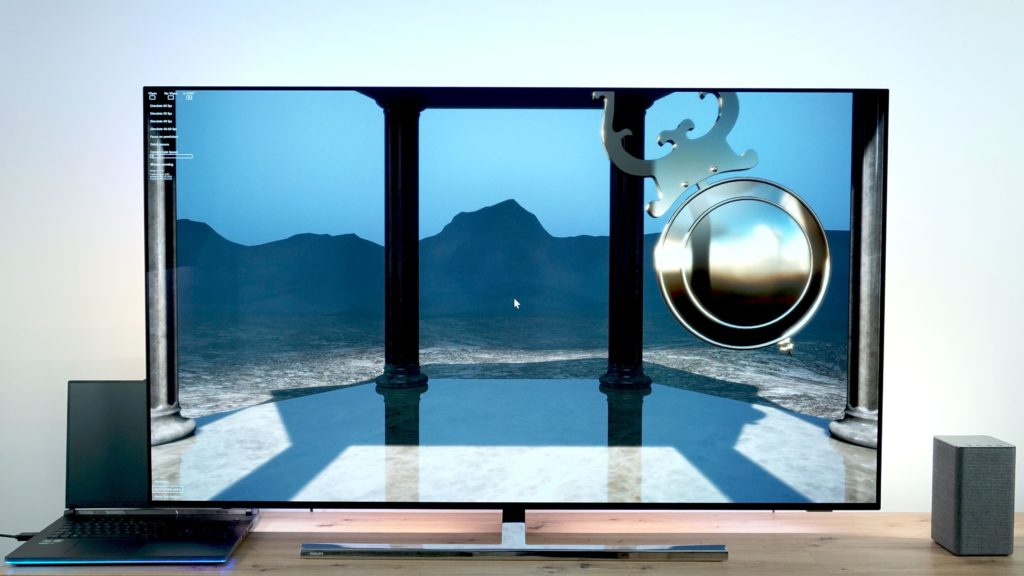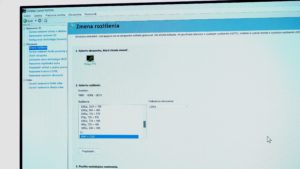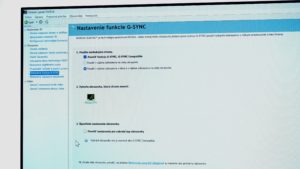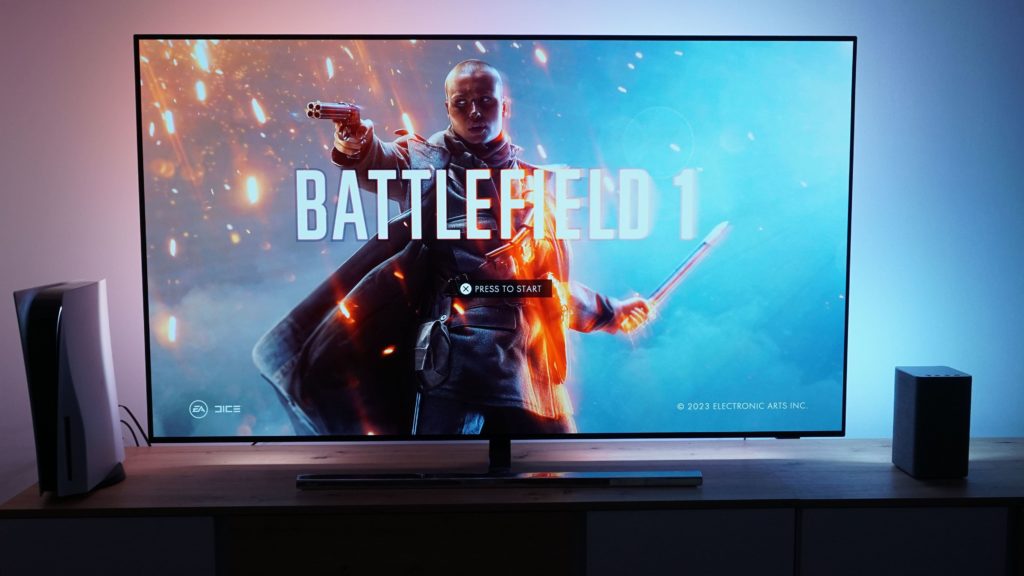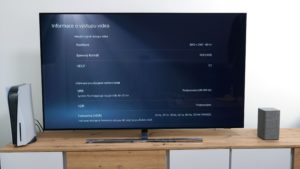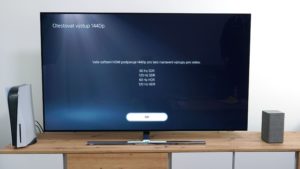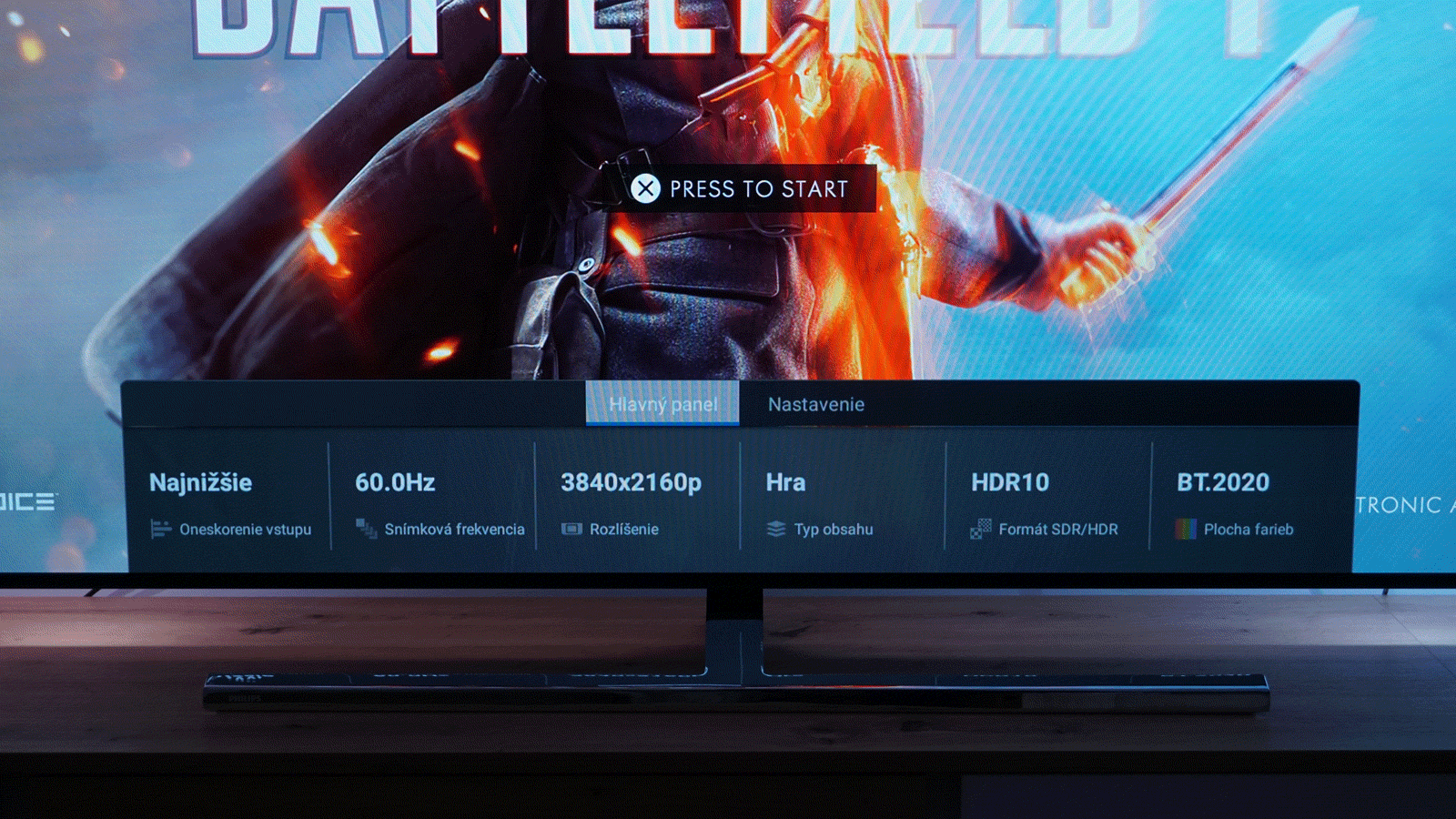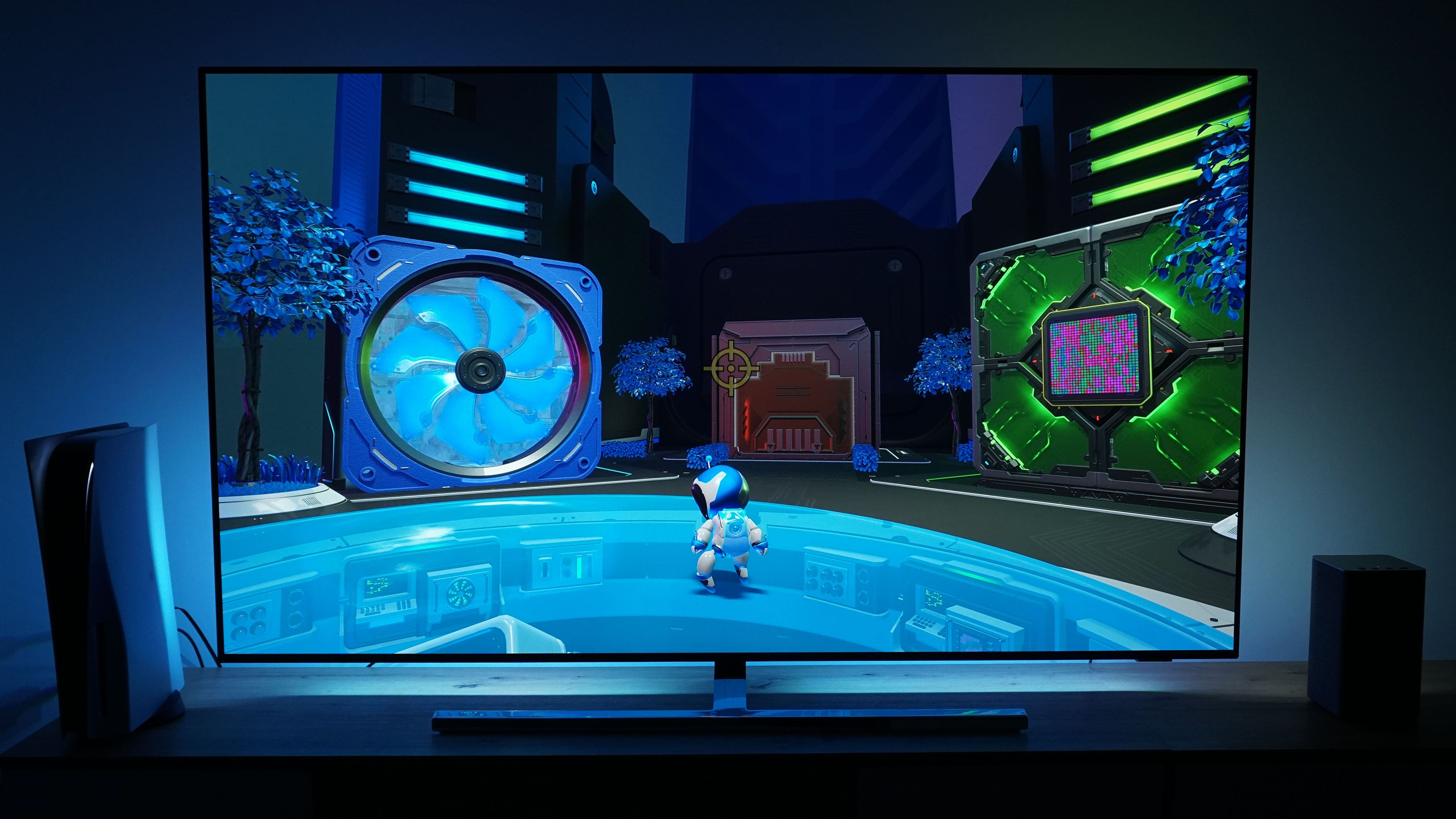Details
Philips offers up to four different OLED models, and after the second highest (907), the cheaper model numbered 807 has made its way to us. However, to avoid repeating the same test over and over again, this time we’ll also focus on DTS Play-Fi technology, using the TAW6205 wireless speaker. Thanks to its WiFi connection, it has several advantages over conventional speakers. This will be discussed as well.
Basic parameters
| Parameters | Philips |
| 65OLED807 | |
| 27E1N5600HE | |
| Display | 65" OLED, 16:9, flat |
| Resolution | 3840 × 2160 px |
| Refresh rate | 100/120 Hz |
| Colors | - |
| AMD FreeSync Premium Pro | yes/yes/yes |
| Response time | – |
| Brightness | 1000 nits? |
| Contrast | – |
| Color spaces | 99 % DCI-P3 |
| Outputs | 2× HDMI 2.1 (4K 120 Hz, 48 Gb, 1× eARC), 2× HDMI 2.0 (4K 60 Hz), RJ-45, CI+, Satelit, optical |
| USB hub | yes, 1× 3.0, 2× 2.0 |
| Audio input/output | yes/yes |
| Speakers | 2.1 (70 W) |
| VESA | yes (300 × 300) |
| Approximate price | 1999 EUR |
Package and accesories
The design language of Philips TV packages remains the same with the 807. Unlike its higher-end sibling, Ambilight has been given preference here over OLED+ and Bowers & Wilkins. This makes the 807 a more affordable OLED model without the premium features that naturally drive up the price of the TV.
The remote control is identical to the 907, again impressing with premium finish with Muirhead leather on the back or backlit buttons. However, it’s still quite large, which the manufacturer plans to improve on with the new 908 for 2023, which will already get a new, smaller remote with USB-C.
The OLED 807 is the first of the manufacturer’s trio of top models, with the already-tested 907 second and the 937 with a separate soundbar standing at the top. Although the 807 is not labeled as OLED+, it still offers LG Display’s high-quality OLED EX panel (that is, except for the 48″ model). However, it is not the “Royal Panel” of the higher-end models and so the 807 has not received the heatsink that allows for higher brightness. However, you can still enjoy the narrow bezels that the EX panels have shrunk from 6mm to 4mm. The OLED 807 is offered in four sizes, namely 48, 55, 65 and 77 inches. The 77-inch model is particularly interesting, as this dimension is absent in the 907’s offering.
Each of the models we’ve tested so far has offered a different stand, and this time is no different. The 807 offers a polished silver T-shaped stand, with a large portion of it extending out in front of the TV. The stand offers the ability to swivel sideways, which we’ll look at a little later.
The port selection on the back is almost indistinguishable from the OLED+907, but we did find a few differences in port placement. On the bottom, we still have a pair of HDMI 2.1s with 120Hz support for connecting game consoles or a PC, complemented by Ethernet, USB 2.0, audio output and inputs for antenna and satellite. On the side there are two more HDMIs, but only 60 Hz, two USBs of which one is 3.0 and there is also a CI module slot and headphone output. The port selection is almost identical to the OLED+907, lacking only the subwoofer jack that the higher model offered.
The OLED 807 shares virtually all the “innards” with the higher-end 907, i.e. both the P5 AI image processor and the Mediatek MT5895 SoC. So you can expect a very similar, if not identical, user experience in terms of image quality and system speed. It is then up to your discretion whether using the same chipset across all models is an advantage or disadvantage. For owners of the lower models, it will definitely be an advantage as they get the same features as the top models, but in the case of OLED+ TVs, the customer would probably expect better hardware. This is partly true for the 937, which is the only one to offer P5 AI Dual, i.e. two image processors, unfortunately this combination is not suitable for gamers as it cuts the vertical resolution in half. Back to the 807 though.
The quartet of Cortex A73 cores with a clock speed of up to 1.8 GHz is characterized by relatively nimble responses when navigating the Android TV environment. However, we already know from previous experience that the chipset doesn’t exactly have the fastest Ethernet or WiFi, which is the reason why only two HDMI ports support 120Hz.
Perhaps the biggest weakness is the small internal storage, which after a few installed applications starts to report a lack of space. According to the papers, it should have 16 GB, but in practice the system shows only 5 GB and even some of it is already used. It’s really illogical how Philips skimps on eMMC memory and practically degrades the user experience. After all, even significantly cheaper models from TCL offer 24 GB of storage, where I have not encountered similar problems. I consider this to be the biggest shortcoming of this generation of Philips TVs.
The panel is extremely thin, as we are already used to with OLED panel models. You need to be careful when handling it, as there is not much to grab the TV at the top, it can only be held loosely. The side view shows us nicely that the display is really only a few millimeters thick and the components are thus placed in the protruding plastic part.
One of the most interesting features of Philips TVs is definitely Ambilight, the backlight behind the TV that adapts to the content being played. But where the 807 excels over the models tested so far is that it offers Ambilight on all four sides of the TV and not just three, as was the case with the 907 or The One 65PUS8807. We will look at what this looks like in practice later.
The OLED+907 impressed with the Bower & Wilkins soundbar, which you won’t find with the 807. Nevertheless, there’s a 70W audio system in a 2.1 configuration that consists of 4 10W mid-range speakers and one 30W subwoofer. The sound reproduction is good and definitely on a better level than that of The One 65PUS8807. However, for an even better experience, it is advisable to connect external speakers, which will be the topic of the second part of the test.
An interesting feature on the back is a joystick to control the TV without using the remote. We are used to a similar system from monitors, and here too such control makes sense.
Another detail is the foot mount on the back of the TV. The stand itself consists of two parts, which are then connected to the body of the TV and the joint is covered with a plastic cap. This also serves to tidy up the cabling, which is quite difficult to hide, as the TV “stands” in the air and the dangling cables are very visible.
We have already mentioned that the stand allows lateral swivelling. This is a rather unconventional feature, but it can be useful in certain situations. You don’t have to lift the whole TV, you just rotate it in the joint.
The polished stand has one disadvantage, however, and that is that it can be scratched, which was also the case with the tested piece. Of course this TV has been through several editorial offices and various presentations, so it has been handled more than usual, but it would still be a shame to have such a nice stand with scratches. So you have to be careful not to bump the stand or possibly knock the stand with an object.
One of the benefits of LG Display’s OLED panels is G-Sync compatibility, which is sure to please all gamers. In our case, we tested the TV using the ROG Strix SCAR 18 with the new RTX 4090.
To work properly, you need to switch the TV from gaming mode to Monitor mode and also have Ultra HD enabled on the HDMI port.
We can then verify compatibility in the G-Sync Pendulum test.
Likewise, the Nvidia Control panel settings allow us to select 4K resolution at 120Hz and enable G-Sync. For PC gamers, this will definitely be a big advantage compared to other TVs, such as those from TCL, which don’t support G-Sync.
Of course, we can’t forget about compatibility with new consoles, in our case the PS5.
Also in this case, everything works without problems, provided the gaming mode is activated, both VRR and HDR worked without the slightest difficulty.
Philips TVs also offer quick gaming settings in the form of the Game Panel, where you can view the current image parameters or quickly activate or change various functions.
One of them is the fast Ambilight backlight control.
The second is then the cursor, which unfortunately has no customization options, as we saw with TCL.
OLED 807 is a suitable companion for both computers and next-gen gaming consoles, as we have already seen in our OLED+907 test. The gaming panel could be a bit larger and offer more customisation options, including the cursor, for example. Philips has room for improvement in this area, TCL has done better.
In the next section, we’ll take a look at wireless speaker connectivity options using DTS Play-Fi.
- Contents
- Details
- DTS Play-Fi
- Range of settings
- Image properties
- Connection speed and performance
- Operational power draw
- Conclusion






